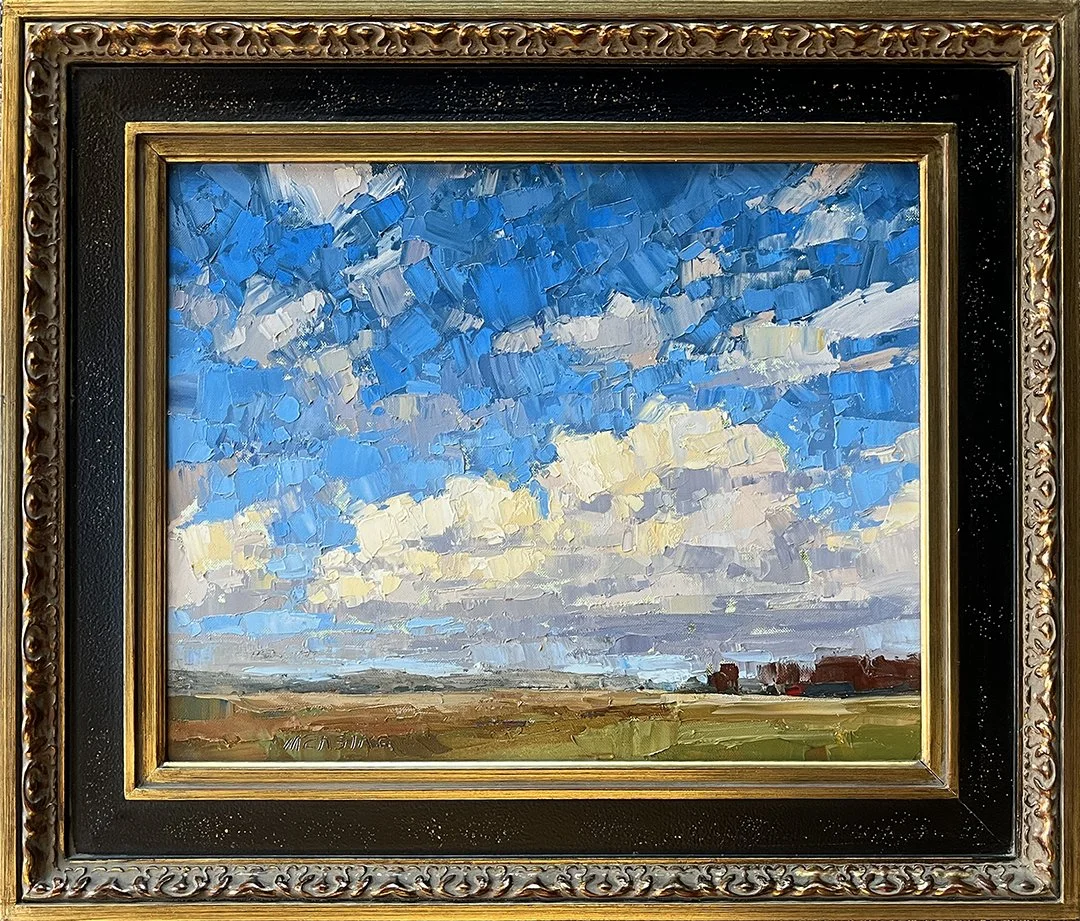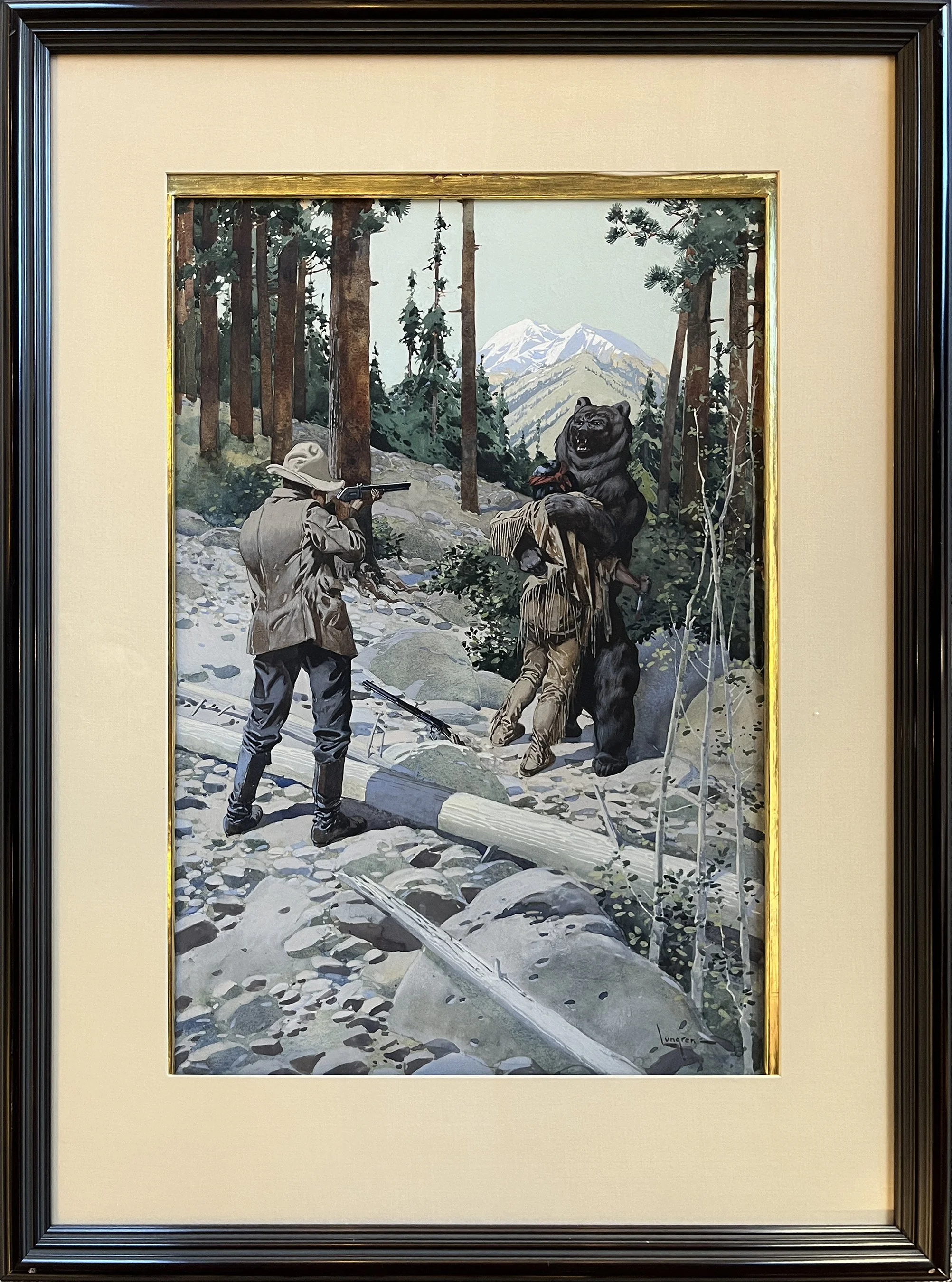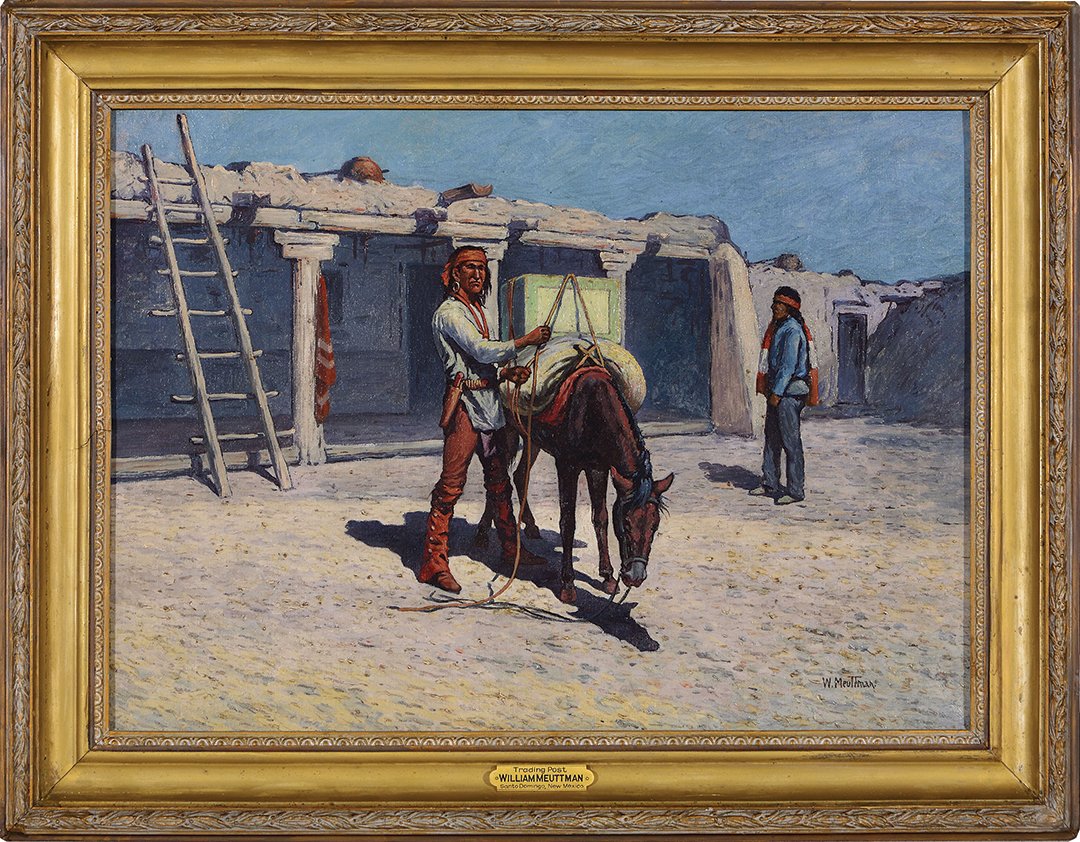Leal Mack
Leal Mack
The Runaway
Oil on Canvas
15 x 19 inches
Signed Lower Right
ID: DH3139
An illustrator for fifteen years before the Great Depression, he had work in leading magazines including the Saturday Evening Post, Country Gentlemen, Harper's, and Youth's Companion. He also did landscape painting and carved his frames.
The following was submitted by Anne Smallwood who obtained the information from fliers she received when buying the artist's work in Taos, New Mexico in the mid 1970s:
"LEAL MACK'S paintings fall mainly within three categories:
THE WORKING WEST - The men and horses, and the cattle they tended, during the later years of the 19th century and six decades of the 20th.
THE TRADITIONAL WEST - That period in our nations' development when the West's undulative hill and plain, the far reaches of the wind-swept grass, lay open to the buffalo herds, to the Comanche and the Sioux, to the plodding wagon trains; when the high Rockies challenged mountain men of the ilk of Jim Bridger and Kit Carson to come on in for beaver but to keep a sharp eye for the hazards.
THE NEIGHBORLY EAST AND MIDWEST - The life of the towns and farms that Leal Mack knew as a boy; the fold that he came to know as he grew to manhood and for some years worked among, and who, in hi through, remained throughout his life as friends and neighbors.
LEAL MACK studied at the Pennsylvania Academy of the Fine Arts, in Philadelphia, then at Chadds Ford, became one of the most productive members in N. C. Wyeth's coterie of young artists of unusual potential. Eventually Mack moved west to Taos, where he painted most of his intimately discerning portrayals of the America he knew and loved.
ESPECIALLY NOTABLE IS Mack's use of color, which on his canvas seems to be transformed into shimmering, glowing--even symbolic-light. In the paintings too are distinctive features characteristic of the Chadds Ford group, an understanding and respect for the simpler elements of life, and that same quality of artistic integrity found in the work of such other individualists as Peter Hurd, Henriette Wyeth Hurd, John McCoy, Pitt Fitzgerald, Carolyn and Andrew Wyeth."





